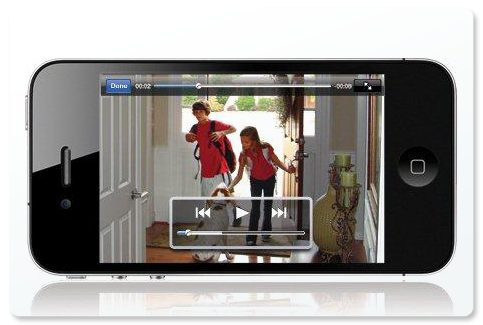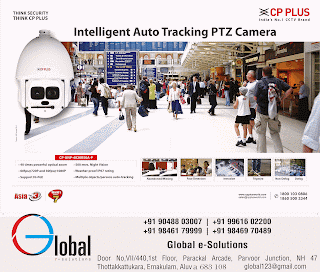The ups and downs of cloud-powered retail video surveillance
Hey You, Get Onto My Cloud
The ups and downs of cloud-powered retail video surveillance
We live in an amazing era of computing that allows almost anyone to view images and videos from around the world on their device of choice with just a few clicks. This appears simple to do, but what is really happening in the background is the “global cloud” of thousands of computers working together using the Internet.
The cloud brings everyday benefits like email, online banking and storing family photos, and it continues to grow in our personal and business lives as we move important data and services from our local laptops and computers to the online cloud. Some retailers use cloud technologies to power their surveillance for more efficient security—and more efficient business.
There are many reasons retail surveillance is using the cloud. The benefits of cloud-powered surveillance include live remote monitoring and recorded video searching from a single website, online video storage, collaborative sharing of video clips and centralized management and maintenance of cameras and servers. The benefits of the cloud network propel surveillance from a tool for loss prevention and human resources into an engine for enterprise business management.
“We use our cloud-powered video surveillance solution to not only reduce shrink, theft and improve security at our stores, but also to watch customer behavior, which helps us improve store layouts and merchandising,” said Scott Hughes, of Tasti D-Lite. “In addition, we use the cloud to observe and train our employees to deliver better customer service and higher conversion rates.”
If cloud-powered surveillance were simple, everyone would be doing it. However, one challenge prevents rapid adoption, and the good news is that it can be conquered. The main obstacle to cloud surveillance is the “B” word—bandwidth.
Just to give you an idea of how big video is, one retail store with five HD cameras needs an upload speed of about 10 MBps for real-time online cloud video recording. In comparison, your PoS transactions are running at a maximum of about 2.4 KBps. Video can be 4,000 times bigger than that, or more.
If you are one of the lucky ones who is bandwidth blessed or has a rich uncle in the Internet connection business, cloud-powered surveillance becomes quite a bit more simple. Surveillance cameras can be connected to your network, and they can record video directly to the cloud using the Internet. The limit of this system is the limit of your bandwidth. If you are on a budget with slow connections, all hope is not lost because there are cloud-powered solutions that can work well.
The simple answer to the bandwidth problem is to not jam the upload pipe full of data and to keep bandwidth to the Internet as low as possible. This can be achieved by storing the majority of the large HD video files on a low-cost server at the retail store and using the upload bandwidth in a smart way with video optimization technologies that control video delivery based on bandwidth. Limiting the upload bandwidth would also require uploading only the important “shared” files, not all of the video files, and uploading video only when needed or during off hours.
Even multiple-location stores that use cost-effective and slow bandwidth can benefit from this type of cloud-powered surveillance.
“All of our stores are connected to the Internet using a DSL connection that only offers 175 KBps upload speed,” said Scott Portis, CEO of Cannon Management. “Even with ensuring that our PoS transactions always go through, I am able to log into our cloud surveillance system to see what my customers and employees are doing at all of our stores from one easy-to-use website or from my iPad.”
Once retail stores are connected with cloud-powered surveillance, the value of this new network is multiplied. The surveillance cloud creates opportunities to monitor up to thousands of retail stores from a single Web interface. A surveillance system running on a high-speed global cloud like Microsoft, Skype Cloud, Google or YouTube Cloud can support instant access to live and recorded video from any camera or server, at almost any location worldwide.










Comments
Post a Comment